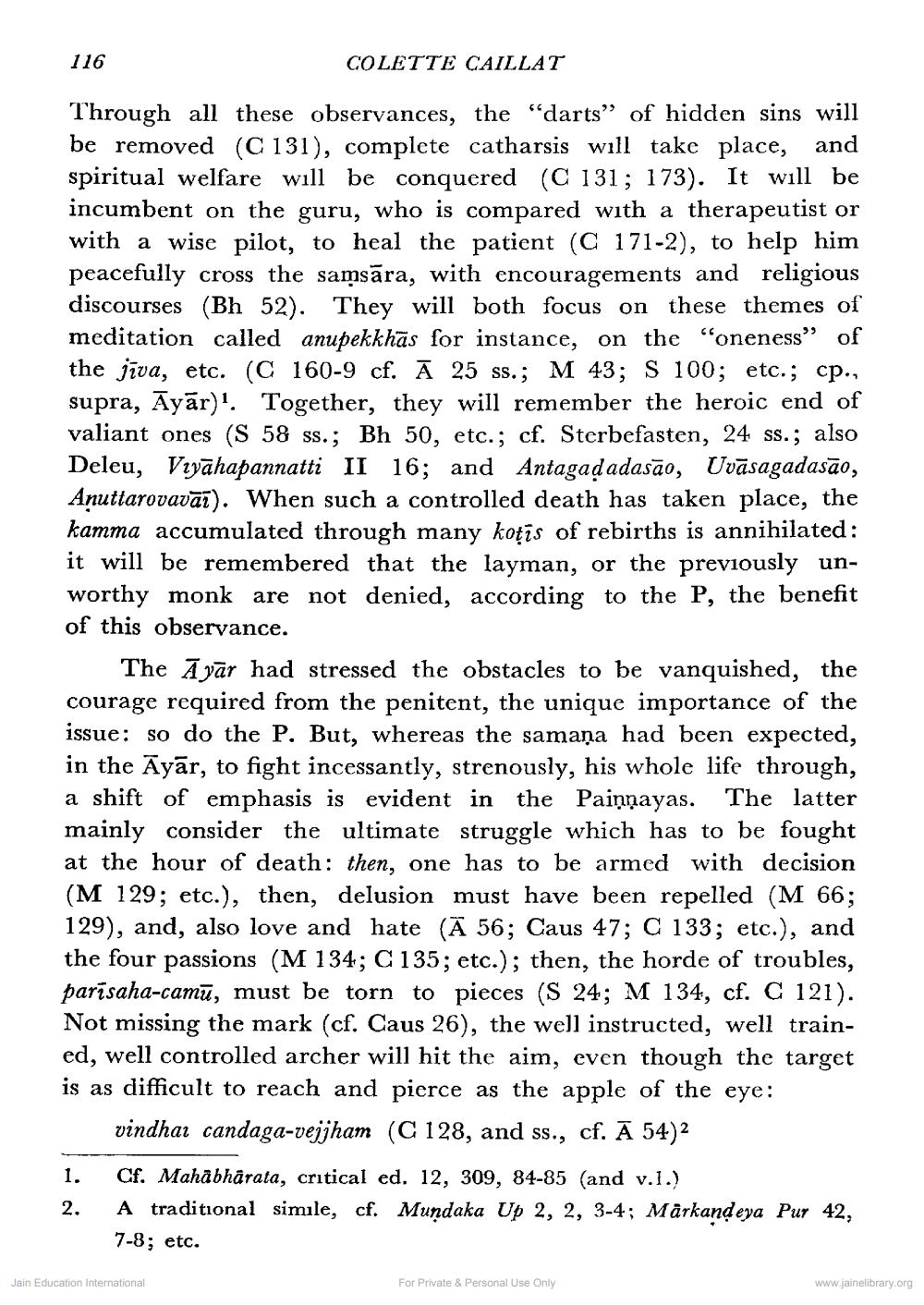________________
116
COLETTE CAILLAT
Through all these observances, the "darts” of hidden sins will be removed (C 131), complete catharsis will take place, and spiritual welfare will be conquered (C 131; 173). It will be incumbent on the guru, who is compared with a therapeutist or with a wise pilot, to heal the patient (C 171-2), to help him peacefully cross the samsāra, with encouragements and religious discourses (Bh 52). They will both focus on these themes of meditation called anupekkhas for instance, on the "oneness" of the jīva, etc. (C 160-9 cf. Ā 25 ss.; M 43; S 100; etc.; cp., supra, Āyār)". Together, they will remember the heroic end of valiant ones (S 58 ss.; Bh 50, etc.; cf. Sterbefasten, 24 ss.; also Deleu, Viyāhapannatti II 16; and Antagadadasão, Uvāsagadasão, Anuttarovavāi). When such a controlled death has taken place, the kamma accumulated through many koțīs of rebirths is annihilated: it will be remembered that the layman, or the previously unworthy monk are not denied, according to the P, the benefit of this observance.
The Āyar had stressed the obstacles to be vanquished, the courage required from the penitent, the unique importance of the issue: so do the P. But, whereas the samaņa had been expected, in the Āyār, to fight incessantly, strenously, his whole life through, a shift of emphasis is evident in the Paiņņayas. The latter mainly consider the ultimate struggle which has to be fought at the hour of death: then, one has to be armed with decision (M 129; etc.), then, delusion must have been repelled (M 66; 129), and, also love and hate (Ä 56; Caus 47; C 133; etc.), and the four passions (M 134; C 135; etc.); then, the horde of troubles, parisaha-camū, must be torn to pieces (S 24; M 134, cf. C 121). Not missing the mark (cf. Caus 26), the well instructed, well trained, well controlled archer will hit the aim, even though the target is as difficult to reach and pierce as the apple of the eye:
vindhar candaga-vejjham (C 128, and ss., cf. Ā 54)2 1. Cf. Mahābhārata, critical ed. 12, 309, 84-85 (and v.1.) 2. A traditional simile, cf. Mundaka Up 2, 2, 3-4; Märkandeya Pur 42,
7-8; etc.
Jain Education International
For Private & Personal Use Only
www.jainelibrary.org




